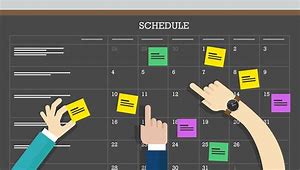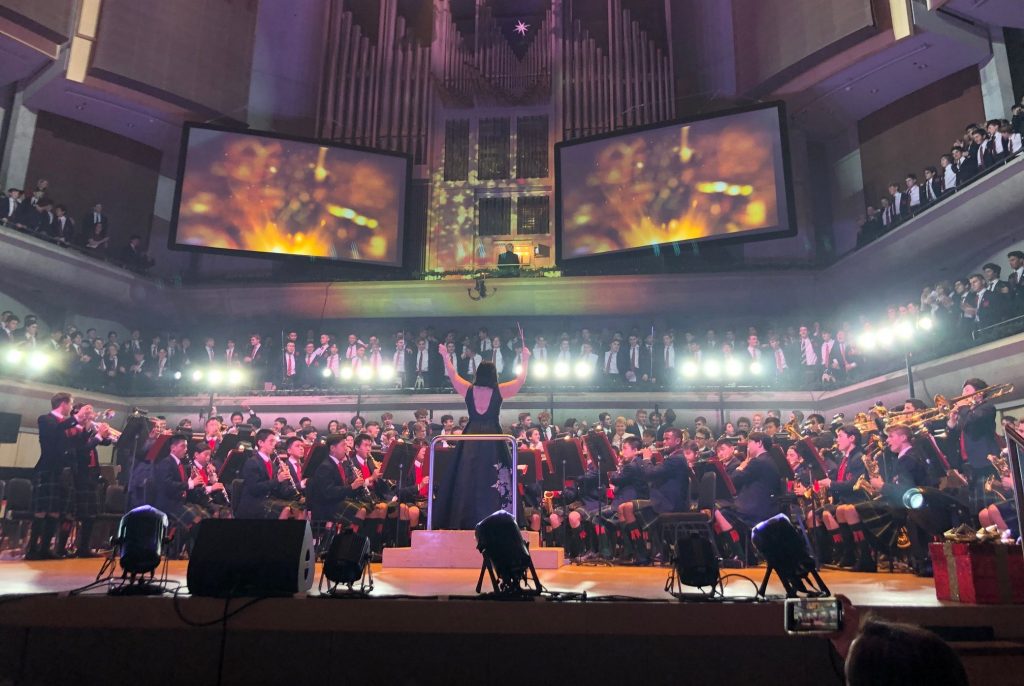27/01/20
Great music educators are a dedicated and passionate lot. There’s the excitement of planning out a new year with new ideas and new repertoire. How thrilling it is to find and bring to life a “winner piece” that will inspire your students, and jumpstart the school year!
But there are plenty of challenges awaiting directors who are eager to develop and maintain a vibrant music program. They’re often faced with reduced budgets or devastating scheduling changes that threaten the very existence of their program. Or they’ve inherited a program that needs re-energizing.
My own experience, as a music teacher for over 25 years, has taught me a lot, but I’ve been inspired by stories told by the many brilliant, talented teachers we work with here at Breezin’ Thru and I’d like to share their wisdom with you.
Let’s take a look at seven key ways to grow your music program.
1. Schedule for Success
What’s getting in the way of the program’s success? Oftentimes teachers point to two types of time constraints – either too little time within the students’ daily timetable or extracurricular activities that pull students in multiple directions. Music teachers need to understand the culture of their school and actively work to carve out protected time for ensemble rehearsals both inside and outside of class time.
Music takes time and effort to learn. If the timetable you have been given allows for little time with students during the day, advocate for more time with your administration. And, in the meantime, schedule after school rehearsal times.
If you try to schedule a band practice at the same time as a sports practice, you might find several of your students are forced to choose. Working with other teachers to figure out a viable time that will allow the music program to cohabitate with other practice times and various clubs is key. For example, you may be able to arrange a music practice for your juniors, during the senior basketball practice, and vice-versa. You have to figure out where your program can fit within the after-school timetable, so that kids have a dedicated time for music without any other conflicts.
2. Jump Start Your Instrumentalists to Sound Better Fast
Starting an instrument takes time and watchfulness to set students up for success right from the start. Sandi Chasson is a Toronto-based band director at St. Andrew’s College who has built (and rebuilt) numerous musical programs throughout the city. She says,
“One of the first things you can do to start the program off on the right foot is to create a boot camp or a musical opportunity for the students. If you can afford to hire professionals who are specialists on each instrument for a few hours, it’s worth it. Or call on the musical friends you know to lend a hand. Little tricks, like how to hold the instrument properly can make all the difference. When you set them up with the right embouchure, you’re six months ahead.”
No money in the budget? Sandi points to YouTube videos. “There are so many fabulous videos out there covering how to put an instrument together, position their hands and lips and make their first sound. It’s so important that kids hear the instruments. If a young oboe player has never heard what an oboe is supposed to sound like, no wonder they sound like a duck!”
Equally as important, when kids sound better, not only does it attract other students to the program, but it can win accolades for the school. Parents will also lend their full support to the program, knowing that their children are playing well even when it’s the first time they hear them.
3. Select the Right Repertoire
How do you hook teenagers on music? Spend time choosing amazing repertoire.
Finding the perfect repertoire for your kids is the tightrope that music teachers everywhere walk! It can’t be too difficult or too easy. It’s important to have timeless, well-constructed compositions that are written specifically for ensembles. It’s great to explore what they are listening to now, but teachers also need to expose kids to types of music they might not otherwise discover if left to their own devices. The right repertoire will both challenge and interest your students. 
Sean Hamilton, the music director at Chicago Academy High School, noted the importance of song choice. He told us that there wasn’t a lot of interest in the school’s music program initially, but as both the band and the choir improved their ability to read and understand music, they could take on more interesting pieces as part of a more diverse repertoire.
His strategy was to let students “have a say in the music they play. There’s more buy-in and the students are more willing to tackle songs that may not be familiar.”
Case in point, his boys choir performed a Glee-inspired rendition of Lean on Me, as well as a modern setting of Dies Irae, sung in Latin.
4. Understand that Music is a Performing Art
Teachers have to set a performance goal and then look for opportunities to perform. There’s nothing that helps kids focus more than having a concert deadline! This could be at a school assembly, a nearby coffeehouse, an exchange with another school or a music festival.
If your ensemble is just starting out, consider lower risk performance opportunities like a lunchtime concert in the cafeteria. As they build their musical chops, you can set your sights on higher profile concerts.
Also, provide opportunities for students to listen to band, choir or orchestra performances of other schools or high caliber professionals. Kids model what they see, and it is an incredible learning strategy.
When students have the chance to perform as well as listen to other ensembles it accomplishes three goals:
- 1. It expands their musical horizons.
2. They get a taste of success and build their confidence.
3. It raises the awareness and interest in joining your music program (and can help with funding support too).
And, don’t forget, nothing captures attention and motivates students more than the prospect of a trip!
5. Give Them the Tools to Talk About Music
Communication is key. Both the students and the teacher need to be able to talk about a piece and understand what is going on using the language of music. If somebody doesn’t understand a rhythm or key signature, it holds everyone back in rehearsal. That’s why being well grounded in music theory is so critical to improving musicianship and is fundamental to the success of your program.
 “Theory should not be a separate entity unto itself,” says Sandi Chasson. “For example, today with my Grade 9 class we did a theory chapter on half steps and whole steps, and used the piano keyboard to demonstrate. Then I put a piece of music in front of them and asked them to tell me what bars contained half steps. Immediately, it was a light bulb moment, they could see the connection between the theory and the music.” This is one of the reasons why the “Play That Tune” feature in Breezin’ Thru Theory is so popular with kids and teachers.
“Theory should not be a separate entity unto itself,” says Sandi Chasson. “For example, today with my Grade 9 class we did a theory chapter on half steps and whole steps, and used the piano keyboard to demonstrate. Then I put a piece of music in front of them and asked them to tell me what bars contained half steps. Immediately, it was a light bulb moment, they could see the connection between the theory and the music.” This is one of the reasons why the “Play That Tune” feature in Breezin’ Thru Theory is so popular with kids and teachers.
While at Dempsey Middle School, music teacher Tracy Cinereski spent every Wednesday working on music theory with her choral students. “I’m able to focus on all the non-instrumental students, who typically are not as strong in terms of reading music. Every year the kids are able to learn music at a more rapid pace and higher level as a result of the theory work we do,” she states. “Now I can have intelligent conversations about music theory concepts. It’s helping us to connect the pieces of the puzzle. When you can combine theory and solfège, your kids are going to sing well. And it is growing my choir!”
6. Have a Plan for Differentiation
In an ensemble, you are only as strong as your weakest link. Here is a 1-2-3 approach to planning for varying levels of playing abilities, knowledge and skill in your group:
- 1. Part Assignments
- If everyone knows their parts and can play or sing them well, your ensemble will shine.
With published music, differentiation comes naturally in the form of part assignments, especially for instrumentalists. Students with a higher skill level can play the melody or 1st part, which is a great reward for hard work. The other students with less skill and performance prowess play the inner parts as in 2nd and 3rd parts. - When working with young choirs, be sure to put some of your stronger singers with good ears in the alto section to pin down the inner parts. If tessitura isn’t an issue, it’s important to recognize that strong singers who may be in the soprano section can sing any part. Singers that aren’t as strong, can manage a melody better than an inner part. It’s all about finding a balance of strength in those sections.
- It’s very exciting nowadays, that there are “flex charts” on the market that break down instrumental parts by musical ability, allowing kids of diverse abilities to sound good together. This would be a great way to build a small and inexperienced ensemble into a stronger and more self-confident group, while getting administrators and parents onside.
- 2. Strengthen with Sectionals
- Try having sectionals during class by providing students with alternative activities. Music teachers tell us that this is one of the ways that Breezin’ Thru is so helpful to them. Students can be completing theory lessons and drills or learning how to compose on any device while the 2nd and 3rd clarinets perfect that troublesome run. Everyone is learning and it gives teachers time to focus their attention on the sections and students that need additional help.
- 3. Create Honor Ensembles
- If your student population allows for it, make sure to have an honor ensemble that can further challenge and inspire your best musicians. This will be motivating for all students as they work toward a spot in a top tier group. It also re-energizes your top players and they bring that back into the class.
7. Keep it Fun, Fresh & Memorable
Get creative! This tip comes courtesy of choir director Hannah Espinoza who grew the music program at her school, W.F. George Middle School, from 50 students to 200 in a period of two years. 
When using Breezin’ Thru Theory, she came up with the genius idea of students mentoring students. Peer-to-peer teaching made learning fun and more likely to stick. And, of course, when kids are invested in their own education, there is more commitment toward the music program.
“We have a ‘Big Brothers/Big Sisters’ mentoring program, where the eighth-grade students are paired with seventh-grade students to make sure they understand the concepts learned in the year before,” she says. “Watching them interact, and working on their lessons together… My eighth-grade students just glow while they explain things to the younger ones. Everyone is smiling. Everyone is learning. And, they are enjoying themselves”.
In my own experience, I’ve found that keeping it fresh in class goes a long way in keeping the kids energized and enthusiastic. You can try things like changing up the seating plan, or having a “monk rehearsal,” a silent rehearsal where no one is allowed to speak and the conductor must mime any instructions.
Music is also an opportunity to create memorable experiences. Lasting bonds amongst students are formed on trips and during band camps. These connections can help “synch” kids so they play better together as an ensemble. As well, performances that result in personal bests and accolades for the ensemble create memories that will last a lifetime. Few other subjects offer this kind of deeper visceral experience.
Bonus Tip: Trust
Trust is everything. Share a bit about yourself and your experiences. Tell your students about what inspired you musically. Create a safe, honest space with your kids. If your pupils trust you, they will work harder and stretch the limits of their own potential.
 Building a music program isn’t easy. However, if you help jump start instrumentalists, support differentiation, and build musical understanding and reading, they will sound better faster. When kids are eager to learn and are excited about performing amazing music, you’ll capture the hearts and minds of students, parents and the community. That’s how you grow a program.
Building a music program isn’t easy. However, if you help jump start instrumentalists, support differentiation, and build musical understanding and reading, they will sound better faster. When kids are eager to learn and are excited about performing amazing music, you’ll capture the hearts and minds of students, parents and the community. That’s how you grow a program.
Jean McKen
Co-Founder and Author
Breezin’ Thru Inc.

